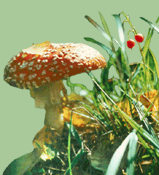The Osprey needs protection
Riho Männik introduces a recently confirmed protection management plan for Osprey, as well as the newest results regarding the biology of the species, gained by using modern technologies. The article features mostly the risk factors, protection activities and new research possibilities related to Osprey populations. Currently, there are about 60 pairs of Osprey in Estonia, most of them in the eastern and southern counties. In Estonia, the most limiting factors are the scarcity of suitable habitats and nest trees, and the natural destruction of nests by strong storms. The protection management plan consists of six fields of activities: protection of habitats, monitoring and research, control and accounting of permanent habitats, education and media-coverage, international cooperation and the renewal of protection management plan. Nowadays, a lot of research is done with the help of GPS-systems. This year, two Osprey individuals were equipped with GPS-s. Unfortunately, one of the birds passed away, but the other one, named Maria, is already wintering on the Congo River near the Equator.
When the land slips away: Sauga landslide
Marko Kohv, Peeter Talviste, Volli Kalm and Tiit Hang take a look at the reasons and results of extensive landslides at the Sauga River and make a proposal for securing the river shores. The latest landslide occured in December 2005, putting a household nearby into a real threat. The geologists have done thorough research there and their results indicate that the landslides have a very complicated, multi-stage development, and the post-slide erosion can easily cause next extensive landslides in the region. The article is supplemented with numerous photos of the landslide and several technical diagrams related to the landslide.
Tree of the Year: Willow worthless and valuable
Mall Hiiemäe writes about folk beliefs regarding willow trees. Most importantly, willow is associated with ecclesiastical Easter holidays. However, in ancient folk belief willow was often associated with evil or with the Evil One. Willows have also been known as whistle trees, and the growth of catkins have been used in forecasting harvest.
An excitingly sweet plant Sweet Honey Leaf
Urmas Kokassaar helps those prone to fatness to find a suitable natural sugar substitute. Stevia rebaudiana, a plant with uniquely sweet leaves, grows naturally in humid climates of Paraguay and Brazil. The American Indians have used the sweet honey leaf for sweetening beverages and food. It is difficult to extract the specific glycoside called stevioside, therefore its use has been rather modest in Europe. Nowadays, however, the need for natural sweetener has grown to the level that sweet honey leaf is grown in plantations all over the world.
European rarities in Estonia: Osmoderma eremita only in Koiva region in Estonia?
Ilmar Süda introduces a large beetle who seems not to exist in Estonia, and is therefore very difficult to be protected. Its northern border of distribution crosses southern Estonia and the only populations seem to exist on the wooded meadows of the Koiva River. The main danger for species everywhere in Europe is the loss of traditional semi-natural communities and agricultural landscapes.
Essay: Being Green by Kalevi Kull
Altogether to the bogs!
Sirje Pärismaa draws attention to the Society of Students of Environmental Protection of the University of Life Sciences. The society has now developed into a cozy society of thinkers. The best-known examples of the activities involve organizing an annual multi-day student conference Winter Academy and promotion of outdoors studies.
Interview: The love for mushrooms usually comes from their culinary characteristics.
Toomas Kukk has interviewed Kuulo Kalamees, a mycologist.
Estonian nature enquires
Juhan Telgmaa writes about the activities of the Estonian Society of Nature Protection, which recently celebrated its 40th birthday.
Marek Strandbergs overview of the developments behind creating the green party.
Hiking trail: on the trails of the Velise Republic
Jürgen Kusmin takes the reader to the boundary of Märjamaa and Vigala rural communities, to a trail hat has been experienced for decades. There are different trails, reaching mostly about 20 km, which carry natural and cultural heritage of the Velise area. Altogether there are some 36 points of interest along the trails. The article presents mostly historical and cultural aspects of the area.
The historic ground ice research of the Narva River
Arvo Järvet recalls a research conducted a century ago and makes observations about later developments of ground ice research. The author introduces the study made by Georg Lüscher in 1906, and his book about ground ice, whereas Lüscher chose the rapids of Narva River as the basis for his theory regarding the formation of ground ice. Ground ice is also formed in other Estonian rivers with rapids, but it is always most extensive in the Narva River.
Rather special than ordinary
This time, Sven Zaèek has caught the sight of an ordinary bird: the Mallard, which behaves modestly in nature, but even too courageously in urban areas. Like always, Zaèeks article is supplemented with colorful photos of the portrayed species the Mallard.
| 

![[IN ENGLISH]](images/gb.gif)





